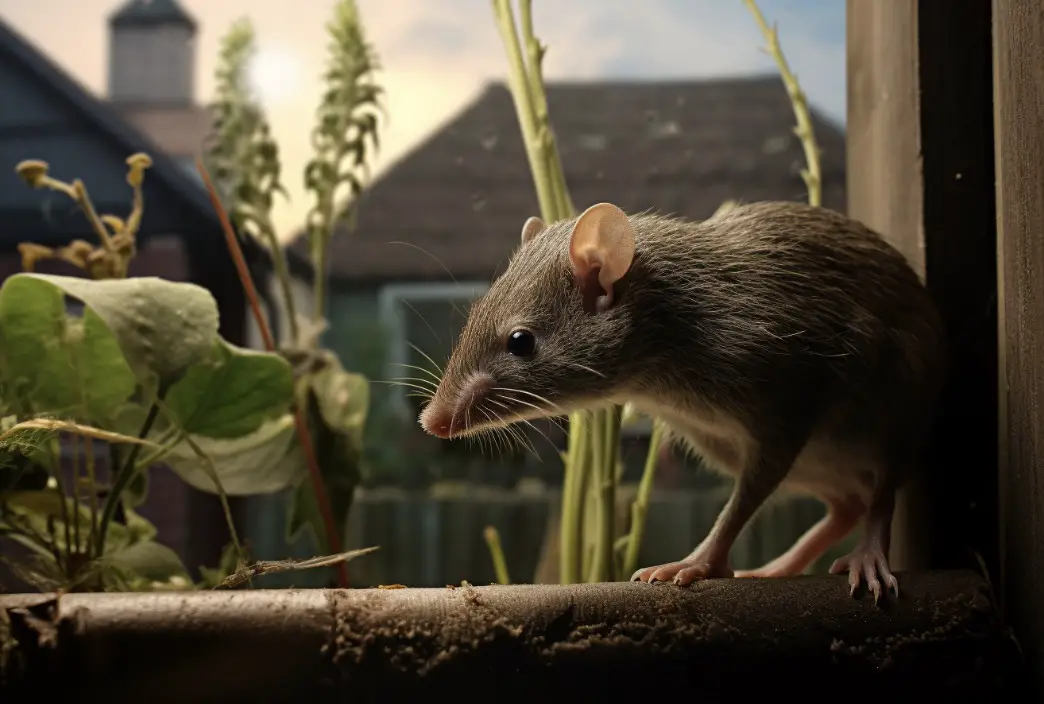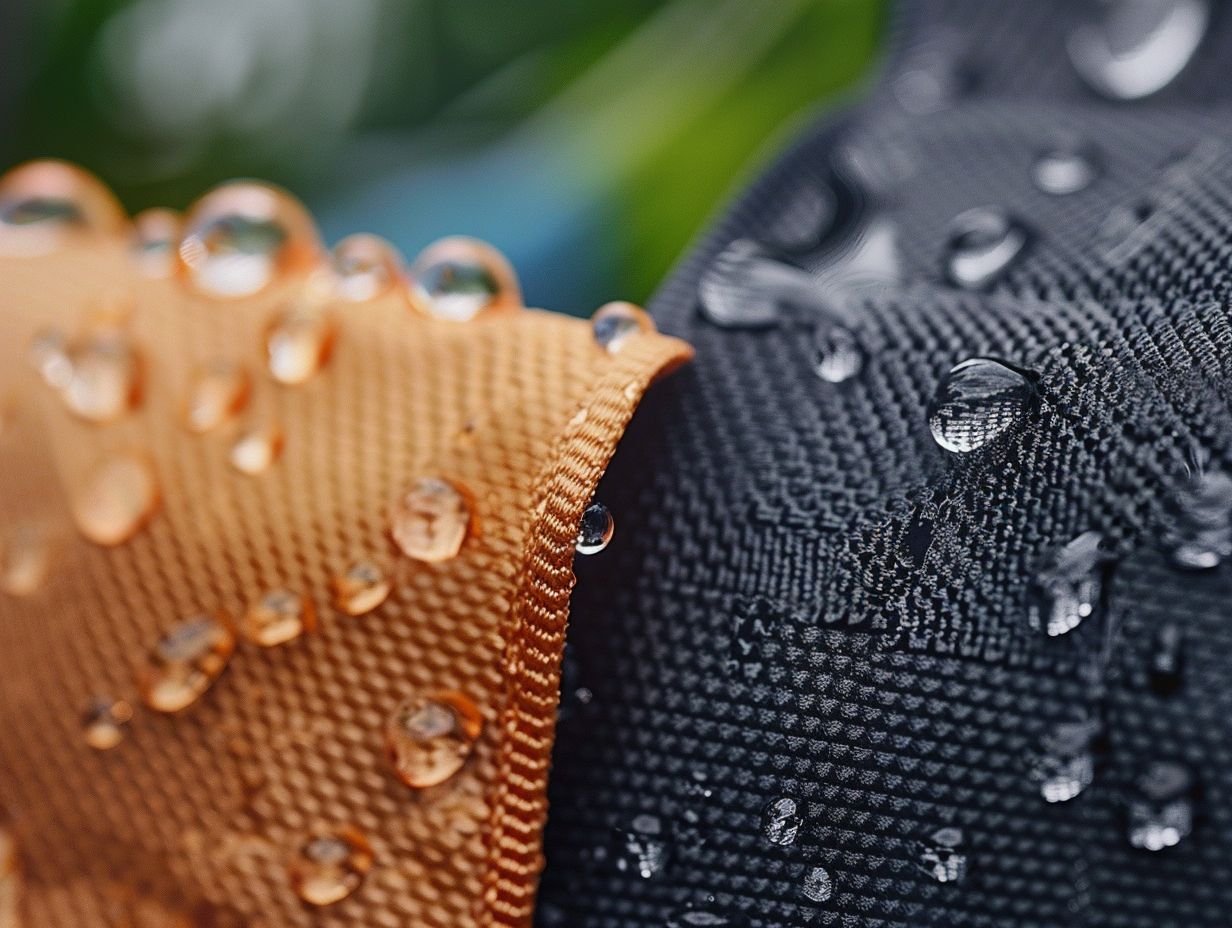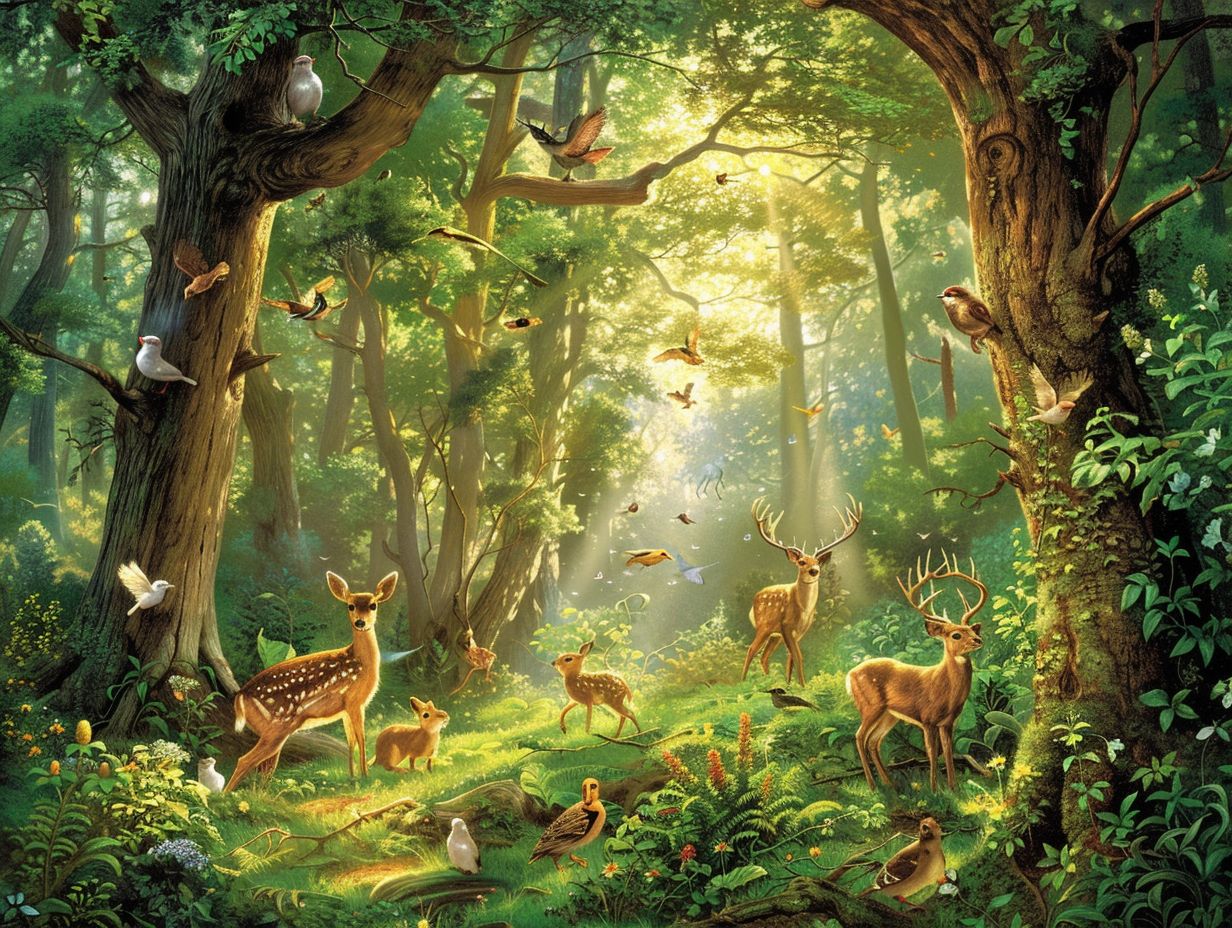Shrews are small mole-like creatures that live above as well as underground. They are often found in North American yards, where they will feed on everything from vegetables to pet food and bird seeds.
Shrews are attracted to yards with lots of plants, fruits, grains and vegetables. They like moist and fertile soil with lots of nutrients and insects, where leaves have been laying on the ground and the grass grows a bit wild, which is what attracts shrews to your yard the most.
They also like vegetable gardens and the insects and worms that thrive there. Wet soil is more attractive to shrews than dry and sandy soil and they do not like competitors like moles, gophers, groundhogs, and other shrews.
They use their sensitive sense of smell to locate just the right backyard with the right type of soil and vegetation.
They do, however, tend to avoid backyards with lots of noise, larger animals like dogs and cats, and those with lots of trees and other objects covering the ground.
Contents
How to know if you have shrews in my yard?
Shrews will leave holes in your yard that are hard to miss unless your grass is very tall. The dirt piles can be as large as eight to ten inches in diameter or more.
However, you probably won’t see an open hole in the middle of these piles, as most of them are simply a means to get rid of unwanted dirt.

You may also see shrew tunnels made from raised dirt as the shrews tunnel just under the surface of the ground. This is because shrews eat mostly insects, and many insect larvae live among the roots of plants, so this is where the shrews search for them.
The tunnels you see are made in search of food, not as homes for the shrews. They are usually used just once.
Why do I suddenly have shrews in my yard?
Shrews are attracted by food sources, so if you suddenly discover shrew tunnels and dirt piles in your yard, it means that you have enough insect larvae underground to attract the shrews.
They love earthworms and insect larvae such as cutworms and various grubworms. You may see shrew activity more at certain times of the year, such as when
May or June Beetles are developing. If you usually see a lot of those beetles as adults, you can be sure that you have plenty of shrew food crawling around underground.
Weather can also play a part. If you’ve experienced a very wet spring, shrews may have been driven from their burrows by rising underground water levels and may move to higher ground. This, unfortunately, may mean your yard.

A drought can also bring shrews to your yard if you water your lawn. Watering not only keeps your lawn green but enables underground insects to live and feed. This can attract shrews when food is scarce elsewhere.
How do shrews find their way to my yard?
First of all, they use their sense of smell. They use that long, pointed snout that can actually move a bit. It’s very sensitive and helps them locate food by smell but also by touch.
They can smell fertile and humid soil, but also potential predators or other shrews and they use these signals to guide them towards the perfect backyard in their search for food!
Their eyes are tiny and their eyesight is somewhat poor, but since they live underground, sight isn’t really a big problem.
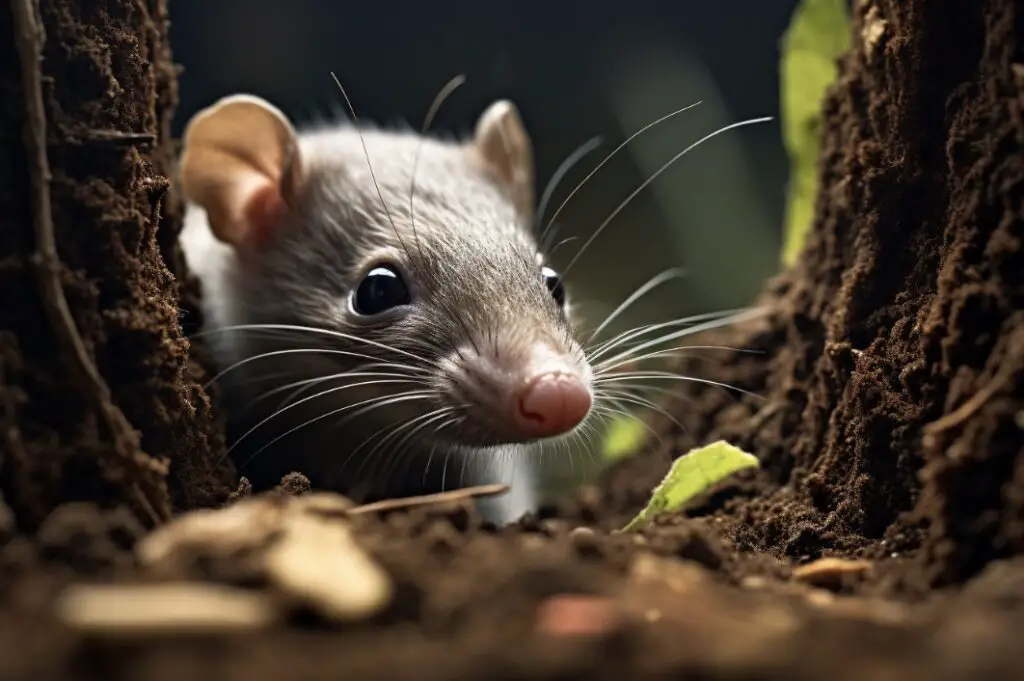
They have long, strong claws, making them perfect for digging. Their orientation makes it possible for the shrews to dig in front of them, and then push the dirt to the side and behind them. A shrew can dig as far as 18 feet per hour.
Are shrews good or bad for my yard?
Shrews can do a lot of damage to a yard, especially if the population is extensive. Their tunnel digging damages the roots of plants and grasses.
Many people believe that shrews eat plant roots and bulbs, but this is not true; they are insectivores, meaning that they stick to insects.
People often confuse shrews and their tunnels with those of groundhogs or gophers, which are attracted by completely different things in a yard!
However, shrew tunnels can be later used by other rodents that will eat bulbs, seeds, and roots, such as gophers, voles, and mice. This is how shrews get blamed.
Another problem is that the tunnels can make mowing your lawn a rather lively experience. Anyone sitting on a riding mower running over shrew tunnels can get bounced around quite a bit.
If you use a push mower, those tunnels can be really hard to get over. After a dry spell, mowing over a dirt pile can drench you in dust.
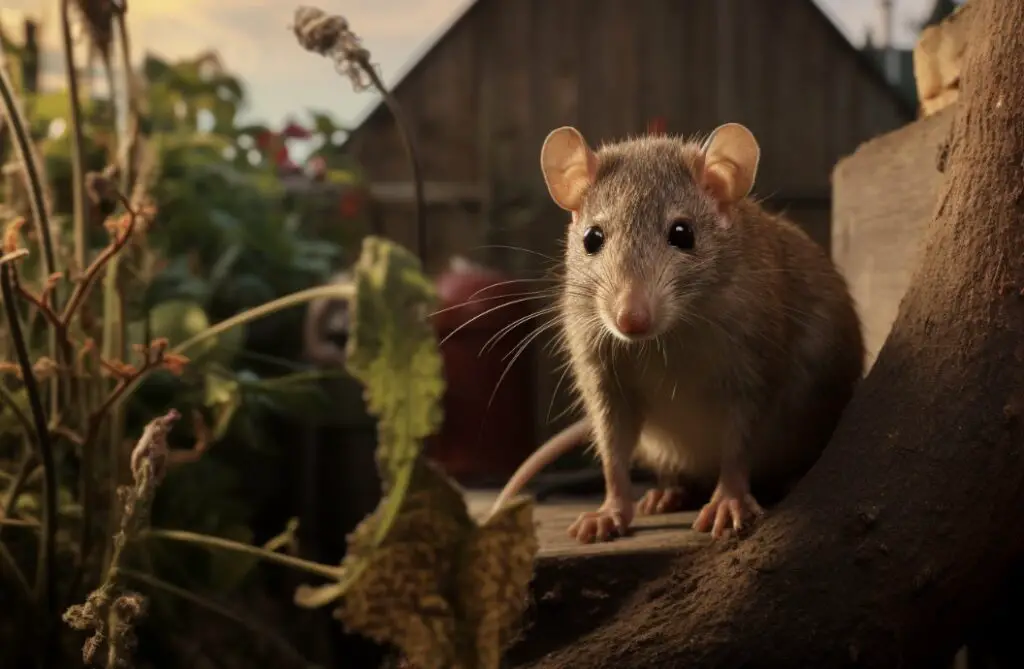
Shrews do also perform a real service to your yard, however. Many destructive insects, such as various types of beetles, can produce a really problematic population size after a couple of years if there are no predators to stop them.
If you’ve ever stepped outside to see the moon on an early summer night and come back in the house with May beetles in your hair, you know how much fun that is.
Shrews feast on beetle grubs and other insect larvae, keeping their numbers in check and perhaps removing them from your yard entirely for at least a period of time. Shrews also are good at aerating your soil and keeping it from becoming impacted.
What smells do shrews hate?
Shrews dislike the smell of garlic, tomato plants, potato plants, marigold, basil and mint. Some people crush elderberry sprigs and insert them into shrewhills. Others swear by mothballs, coffee grounds or castor oil with cayenne pepper mixed in.
Tomatoes and potatoes belong to the toxic nightshade family and mint, as well as other herbs are too strong-smelling for the sensitive nose of most shrews.
The classical tricks to scare away shrews from your yard are to insert any of these smelling objects or plants into the opening of the shrew tunnels.
The problem with anything inserted into a shrew tunnel is that most tunnels are used once as part of the search for food. They usually live in large chambers that are farther underground than the surface tunnels.
Their main tunnels can be 8 to 23 inches below the ground surface, meaning that it’s really tough to get any scent deterrent into a tunnel where it will really be a deterrent. Trying to smoke them out is also problematic, as a large number of surface tunnels disperses the smoke and it seeps up through the soil as well.
Will shrews eventually leave my yard?
They do leave once their food source dwindles. This is especially true if they were attracted to a seasonal abundance, such as those made by cutworms and beetle grubs, which tend to become plentiful in early spring.
Their stay can be as short as two or three weeks before they move on. Fortunately, shrews don’t like crowding and aren’t social animals, so you don’t have to worry about having a shrew convention in your yard.
Even a rather large yard can have only two or three shrews. If another shrew comes around, he’ll think your yard is too crowded and go elsewhere.
So, what are ground shrews attracted to in the soil?
Ground shrews, or just shrews, tend to be attracted to moisture imbalances in the soil. This means that they are attracted to yards that have been overwatered or underwatered.
The imbalances tend to form pockets of shrew food. Dry areas lead to an overpopulation of insects, while wet areas usually contain an overpopulation of earthworms and nightcrawlers.
Either way, it’s a feast for shrews. They are also attracted to yards that don’t have a lot of underground barriers, such as the roots of bushes and trees.
What are some ways to deter shrews from your yard?
There are several ways to prevent pests like shrew from invading your backyard. I will go through my favourite methods here.
1. Motion-activated sprinklers
Like most animals, shrews hate surprises, and they will run away if suddenly sprayed with water. I like this solution because it is humane, simple, effective, and does not require much time to set up and there are many models to choose from.
The Havahart 5277 is a motion-activated sprinkler that is activated by the movement of animals up to 25 feet away and sprays them with a harmless water jet, frightening them off and keeping them at bay.
The included metal stake makes it easy to install in your backyard, and the sprinkler can be rotated 180 degrees for maximum coverage.
2. Ultrasonic Sound Emitters
Shrews, as well as other animals that may invade your backyard, tend to have very good hearing.
This means that loud or consistent noises will scare them away or at least shorten their visits significantly!
One of my favorite technologies to keep pests away from my backyard is these cool solar-powered ultrasonic sound emitters that you can buy right from Amazon!
In my experience, they really work for scaring away shrews when you stick a lot of these in the ground, and the solar panels on top save you the time and money of changing batteries all the time.
3. Build a Fence
The most obvious and practical solution to protecting your plants from shrews is to install a fence around the patch. A fence should be at least 6 feet tall and sunk in the ground about 8 inches.
The best fencing material for this purpose is a cattle panel or hog panel as they are very sturdy and can withstand even quadruped animals such as goats, cows, and shrews.
However, most chicken fencing types will do. This will be strong enough to stop them from getting through while still allowing for airflow and sunlight.
If you don’t like the idea of building a fence around your entire onion patch then you can try fencing off only the area that your onions, tomatoes, or zucchinis are in; this will at least keep some of the shrew, groundhogs or gophers away from them.
4. Using Hot Pepper Or Garlic Spray
This is a good way to protect your vegetable plants or decorative flowers against pests such as gophers, rabbits, groundhogs, and shrews. It will also protect your backyard against the neighbor’s cat that thinks it is fine to use your vegetable garden as a toilet.
You only need about 1 tablespoon of crushed chili pepper and garlic along with 1 cup of vinegar per half a gallon of water.
Spray this mixture on any exposed parts of the plant until completely covered. Make sure you reapply whenever rain washes away the spray.
5. Use Shrew Deterring Companion Plants
As mentioned earlier in this article, due to the strong sense of smell that shrews possess, many herbs and strong-smelling plant-derived products like coffee grounds can help to deter shrews from your backyard.
But instead of making a tincture out of strongly smelling plants, you can also just plant the plants themselves!
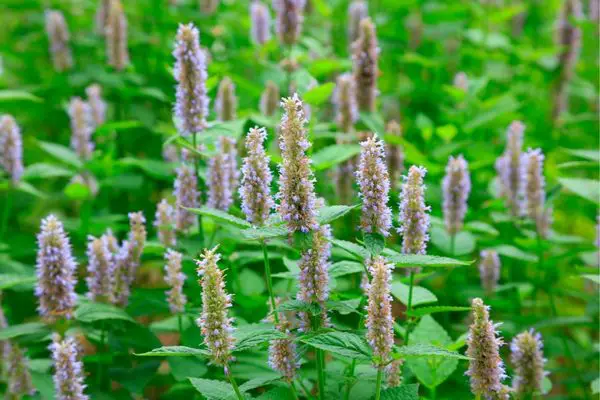
Companion planting is a good way of deterring animals like shrews from your garden. You can plant strong-smelling plants such as garlic, basil, mint, lavender, and chives around your favorite vegetables.
Be careful with the mint though, as it spreads like wildfire in a well-watered yard! But they look and taste pretty good. Better than shrews, that is…
These plants will keep animals like shrews, gophers, and groundhogs away because they don’t like the smell of these and they mask the smell of the delicious plants.
6. Use Shrew Repellents
You can use some of the commercially available repellents to protecting your vegetable plants against shrews, gophers, and other animals eating your tomatoes.
You will need to be careful when using these though because some of them can end up harming you and your pets if not applied properly. Some of the commercial shrew repellents available include Shake-Away, Bonide Repels All, Critter Ridder, and Tom Cate Repellent.
Green Screen is my favorite one as it comes in small bags that you place around your lawn. It is safe and easy to use with all edible plants in your garden!
7. Using a Scarecrow
Scarecrows may look a little funny in your garden, but they work surprisingly well. Just make sure your scarecrow is big and scary enough to deter shrew from getting anywhere near your tomatoes, zucchini, or backyard flowers!
Also, you may need to replace the scarecrow every now and then as shrew will get used to it.
Conclusion
Shrews are attracted to yards with lots of insects in the soil, moist and fertile soil, and where leaves have been laying and grass grows.
They use their sensitive sense of smell to locate these areas. Shrews will leave holes in your yard and you may see shrew tunnels made from raised dirt.
Shrews are attracted by food sources, such as earthworms and insect larvae, and weather conditions. If you have a lot of shrews in your yard, they can do damage to the roots of plants and grasses.
However, shrews also eat destructive insects, such as various types of beetles, which can be beneficial to your yard!
There are several ways to protect your backyard against shrews including using onion bags around the plant or spreading shrew-repellent granules around the area.
You can also use fencing (chicken fencing is usually sufficient) to keep shrews away from your tomato plants. Finally, you can use lighting and reflective materials to scare shrews away from your tomato plants.
While traps may be dangerous to pets or children if not properly monitored and repellants can be expensive, toxic, and take time to work. Fences are a good option if you have the space, but they may not be practical in all situations.
Scare tactics such as making loud ultrasounds or using reflectors and scarecrows are probably more effective long-term solutions

